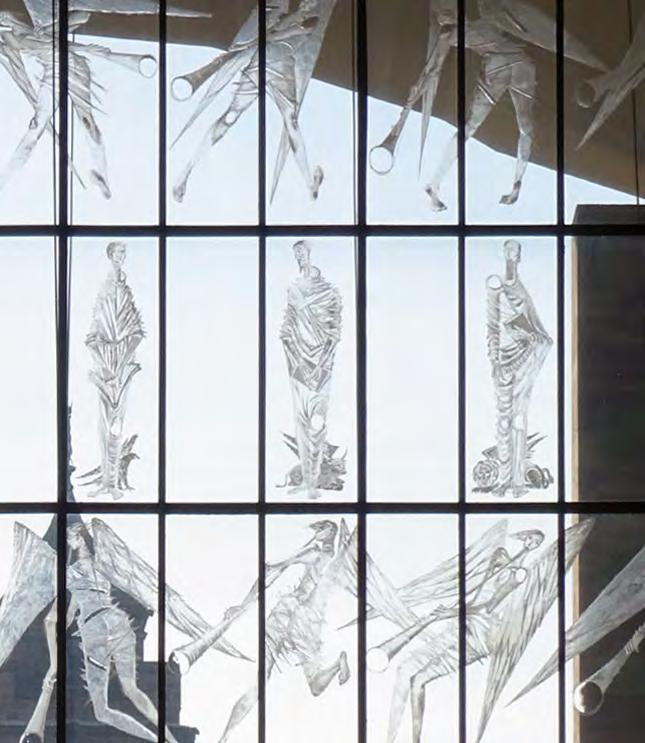CONSERVATION FRAMEWORK
5.3.6 REPAIR, MAINTENANCE AND CONSERVATION See also: 5.3.4
Ruined cathedral
5.3.7
Restoration and new works
5.3.11
Environmental Sustainability
HERITAGE CONSIDERATIONS Coventry Cathedral is a Grade I listed building of exceptional significance. As such the Chapter has a duty to ensure the structures remain in good condition. The conservation of significant places is founded on appropriate routine management and cyclical maintenance, supplemented by periodic renewal and repairs. Maintenance and Monitoring at Coventry: Maintenance should be carried out regularly and periodic monitoring will inform continual improvement of planned maintenance regimes, identifying the need for periodic repair or renewal at an early stage.63 Monitoring and investigations into Post-War materials will be particularly important as less is understood about their performance over the long term. Systematic, methodical recording as part of the monitoring process, before and after alteration, will be of vital importance. Periodic renewal at Coventry: Periodic renewal of elements of a significant place, is normally desirable unless any harm caused to heritage values would not be recovered over time. This relates to structural and built fabric such as roof coverings, rainwater goods and mortar joints, which are designed to have a finite lifespan. Renewal is required when that component becomes incapable of fulfilling its intended function through more modest interventions. Repair of Coventry Cathedral: Repairs necessary to sustain the heritage values of a significant place such as Coventry are normally desirable if: •
•
63
There is sufficient information to understand comprehensively the impacts of the proposals on the significance of the place.
proposals are designed not to prejudice alternative solutions in the future. •
The proposals are designed to avoid or minimise harm, if actions necessary to sustain particular heritage values tend to conflict.64
•
The repairs have been considered essential and necessary to ensure the functioning of the Cathedral as an active place of worship.
The underlying causes of decay and need for repair, as well as any long-term consequences should be fully understood before work commences. Only proven methods of repair should be used, and treatments avoided that may cause damage to historic fabric and cultural significance. Repairs should be undertaken using the least invasive means possible. The materials and craftsmanship used in the new cathedral are generally traditional. Techniques and materials that are understood through past performance, and that match the existing, should be used in order to reduce risk in the future. While techniques of the Post-War period may have been experimental or used low quality materials, those that have stood the test of time and can still be sourced should be used in like-for-like replacements. Those that are inherently defective should be substituted for a better-designed alternative if one is available. Whatever the technique used, it is vital to ensure repair methods are appropriate to the type of construction. 65 Traditional techniques for consolidating and repairing historic masonry should be employed at the ruined cathedral.
The long-term consequences of the proposals can, from previous experience, be demonstrated to be benign, or the
Historic England, Conservation Principles, Policy and Guidance, 2008 121
64
Ibid
65
ICOMOS, Approaches to the Conservation of Twentieth-Century Cultural Heritage Madrid - New Delhi Document, 2017














